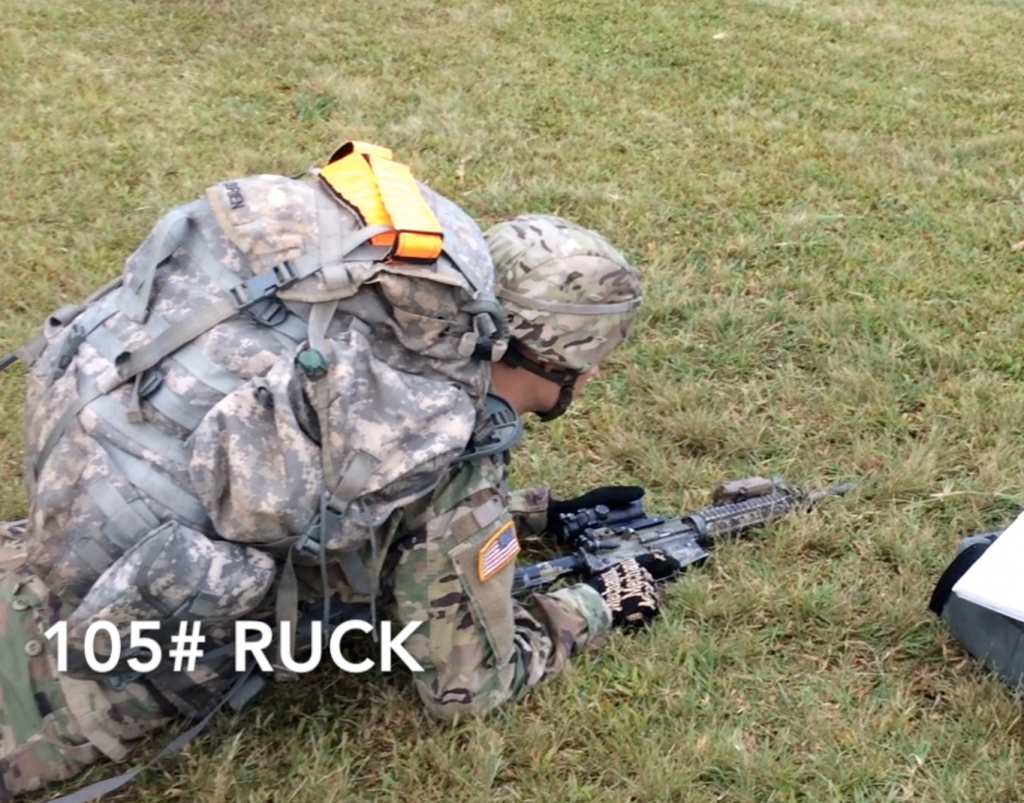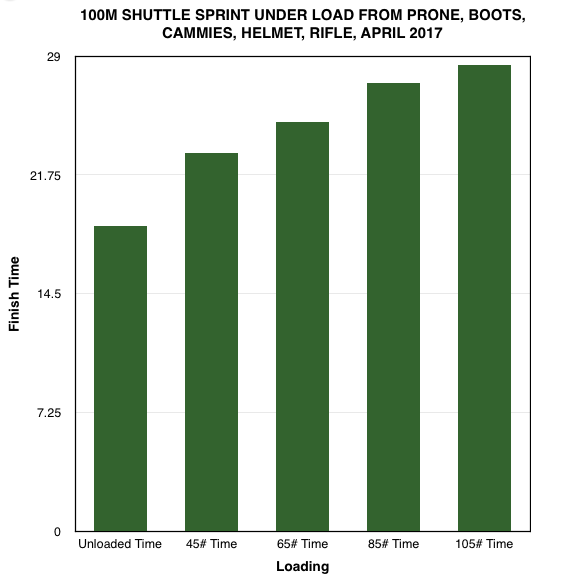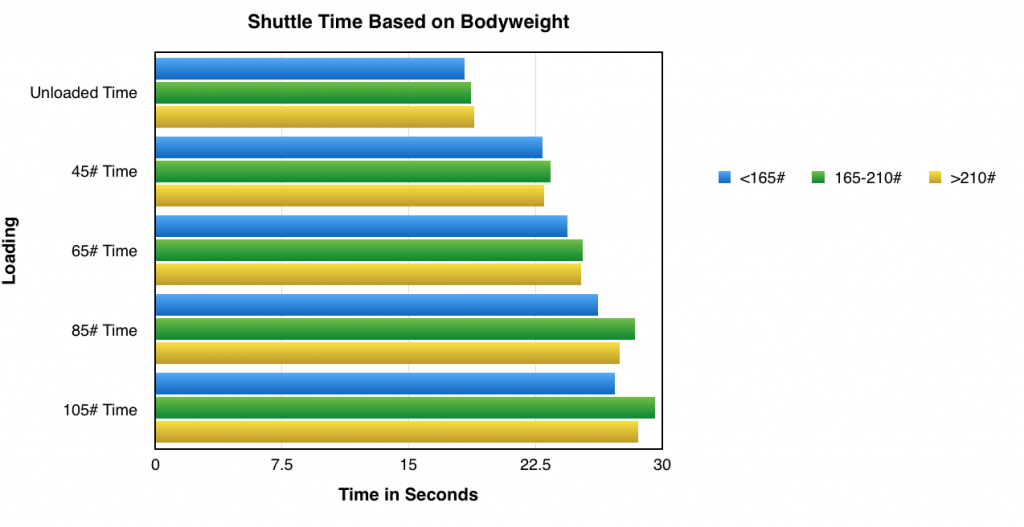
By Rob Shaul
Loading for tactical athletes significantly increased over past decades with the development of body armor and other protective equipment, electronics (radios, night vision, GPS, batteries), and unit/mission-specific SOP equipment standards.
All of this adds up to extra weight on the athlete, and common “fighting loads” for day-missions on the military side in excess of 60 pounds including ammo, weapon, protective gear, water, electronics, batteries, etc.
Extra loading costs in terms of not only physical demand on the athlete but also in movement speed. Last month we conducted an MTI Mini-Study on the speed effect of increased loading with 9 soldiers at Schofield Barracks in Hawaii.
Data Collection Details
Test Subjects:
Nine volunteer soldiers at Schofield Barracks, Hawaii.
Uniform:
Cammies, helmet, boots, carbine and loaded military issue ruck for loaded trails.
Course/Event:
Two cones were placed 50m apart on a flat, grass course.
From prone on the ground, on “Go” the subject came to standing and sprint 50m to the far cone. Stop, turn around and sprint back. A stopwatch was started on “Go” and stopped when the athlete crossed the starting cone.
Trials/Loading:
Each test subject completed 5 trials:
- 1) Uniform, Helmet, Rifle only – no ruck.
- 2) Uniform, Helmet, Rifle + 45# Ruck
- 3) Uniform, Helmet, Rifle + 65# Ruck
- 4) Uniform, Helmet, Rifle + 85# Ruck
- 5) Uniform, Helmet, Rifle + 105# Ruck
Only one ruck was used for the data collection. Before each new trial began, load was verified using a crane scale.
Rest between trials averaged 9 minutes.
See video for trail examples at each load.
Results and Discussion
The largest jump – nearly 5 seconds – in shuttle time came between the first and second trail – no ruck to a 45# ruck.
The curve slowed continually, but at a smaller rate across the three remaining trials – 65, 85 and 105 pounds.
The average speed loss for all 9 athletes from no ruck to 105# ruck was nearly 10 seconds.
We purposely started the athletes prone, and conducted a shuttle to simulate a movement under fire scenario. The significance here is that with a 45# load, athletes would be exposed to fire an extra 5 seconds, and this exposure increased to nearly 10 seconds when the load increased to 105 pounds.
On our mountain side, the high-level alpinists we work with often say “speed = safety” and consciously work to decrease pack weight accordingly. Based on this mini-study, the same could be true of tactical loading.
One surprising result of the study was that bodyweight did not significantly impact results. On prior rucking studies with distance events, MTI and other researchers have found that a greater bodyweight improves rucking speed performance.
The lightest test subject for this mini-study had a bodyweight of 141 pounds. The heaviest test subject has a bodyweight of 239 pounds.
In all we had 3x test subjects weigh less than 165 pounds, 3x between 165 and 210 pounds, and 3x over 210 pounds. For this study, on average, the lighter test subjects ran the shuttle sprint faster for each trial.



Impact
In our work with military athletes, loading has been a conscious concern for longer movements but rarely discussed for sprint efforts. The assumption many have is when coming under fire, military athletes will drop their ruck, and move with their “fighting load.”
However, fighting loads can weigh in excess of 45# which alone slowed our test subjects down by five seconds and 24 percent over this 100m course.
Two takeaways come to mind
- First – carefully consider necessary gear and loading.
- Second – train sprinting under load. This is one of the goals of our TAC SEPA methodology.
Questions, Comments, Feedback? Email coach@mtntactical.com
You Might Also Like Mini Study: Threshold Ruck Intervals Best for Developing Short Distance Rucking Speed
